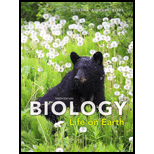
Concept explainers
Scientists hypothesize that the ancestors of plants were. There are two major types of plants; those that lack conducting cells are called and those with conducting cells are called. All plants produce multicellular and exhibit a complex life cycle called.
To review:
The given blank space in the statement, “scientists hypothesize that the ancestors of plants were__________. There are two major types of plants; those that lack conducting cells are called __________ and those with conducting cells are called __________. All the plants produce multicellular _________ and exhibit a complex life cycle called ___________.”
Introduction:
A major part of the earth was submerged in the oceans during ancient times. The life is assumed to have evolved under the ocean as that was the only favorable environment for the living organisms. They obtained nutrients from the water and could move freely from one place to another. They also received protection from the harsh terrestrial environment, which frequently oscillated between warm and cold temperature conditions. Similarly, the ancestors of the present-day plants also evolved in the water.
Explanation of Solution
The evolution of plants can be proved from the fact that some plants still grow in the aquatic environment like algae, some bryophytes, and a few pteridophytes. Photosynthetic algae are considered as the ancestors of present-day plants.
The water-dwelling plants lack true roots, stems, leaves, and reproductive structures like fruits and flowers. These plants lack water conduction system like xylem and hence, are called nonvascular plants. Algae and bryophytes fall under this category. The plants that contain a proper conducting system, almost all the terrestrial plants, are called vascular plants or tracheophytes.
A common feature of aquatic and terrestrial plants is that they produce a multicellular-dependent embryo and their haploid gametophyte alternates with diploid sporophyte. The photosynthetic nature and this complex life cycle distinguish them from other organisms.
Scientists hypothesize that the ancestors of plants were green algae. There are two major types of plants; those that lack conducting cells are called nonvascular plants (bryophytes) and those with conducting cells are called vascular plants (tracheophytes). All the plants produce multicellular embryos and exhibit a complex life cycle called alternation of generations.
Want to see more full solutions like this?
Chapter 21 Solutions
Biology: Life on Earth
- Which of the following is not a characteristic of plants? (a) cuticle (b) unicellular gametangia (c) stomata (d) multicellular embryo (e) alternation of generationsarrow_forwardLike many multicellular organisms, plants have organs that perform specific functionsWhich of the following correctly pairs a plant organ with its function? ANSWER CHOICES ARE IN THE PHOTO. thanksarrow_forwardSome plants have adapted to modify some of their organs to perform atypical tasks. An example of a modified leaf is a _______. storage root taproot runner tendril tuberarrow_forward
- make a concept map, that shows how reproduction takes place in plants. (Include the modes, sexual and asexual; and fertilization)arrow_forwardBy a schematic diagram, describe the timeline of plant evolution and the impact of land plants on other living things.arrow_forwardMonocarpic plants are those that produce fruits ...............during the life of the plant.arrow_forward
- Discuss four key evolution innovations in plants.arrow_forwardName the three parts of the sporangium and give their functions? (talking about nonvascular plants) (liverworts)arrow_forwardPLEASE ANSWER 1, 2 AND 3 QUESTIONS (brief explanation only). 1. Biologist hypothesize that the first land plants had a low, sprawling growth habitat. Which of the following is part of the logic behind that theory? A. The low sprawling growth gave them greater surface area exposed to light for photosynthesis. B. This was prior to plants’ development of adaptations to defend themselves from predators, so by growing low they were out of sight of most predators. C. The wind speed was much greater at that time that it is now, and pushed the plants over. D. To obtain water, they had to keep their tissues in direct contact with moist soil. 2. What adaptation allowed the seed plants to lose their dependence on water to accomplish fertilization? A. gametophytes B. pollen grains C. sporophytes D. seed 3. Xylem and phloem are found in? A. bryophytes, ferns, conifers, and angiosperms. B. only the gametophytes of vascular plants. C. the vascular plants, which include ferns, conifers and…arrow_forward
 Biology (MindTap Course List)BiologyISBN:9781337392938Author:Eldra Solomon, Charles Martin, Diana W. Martin, Linda R. BergPublisher:Cengage Learning
Biology (MindTap Course List)BiologyISBN:9781337392938Author:Eldra Solomon, Charles Martin, Diana W. Martin, Linda R. BergPublisher:Cengage Learning Concepts of BiologyBiologyISBN:9781938168116Author:Samantha Fowler, Rebecca Roush, James WisePublisher:OpenStax College
Concepts of BiologyBiologyISBN:9781938168116Author:Samantha Fowler, Rebecca Roush, James WisePublisher:OpenStax College

